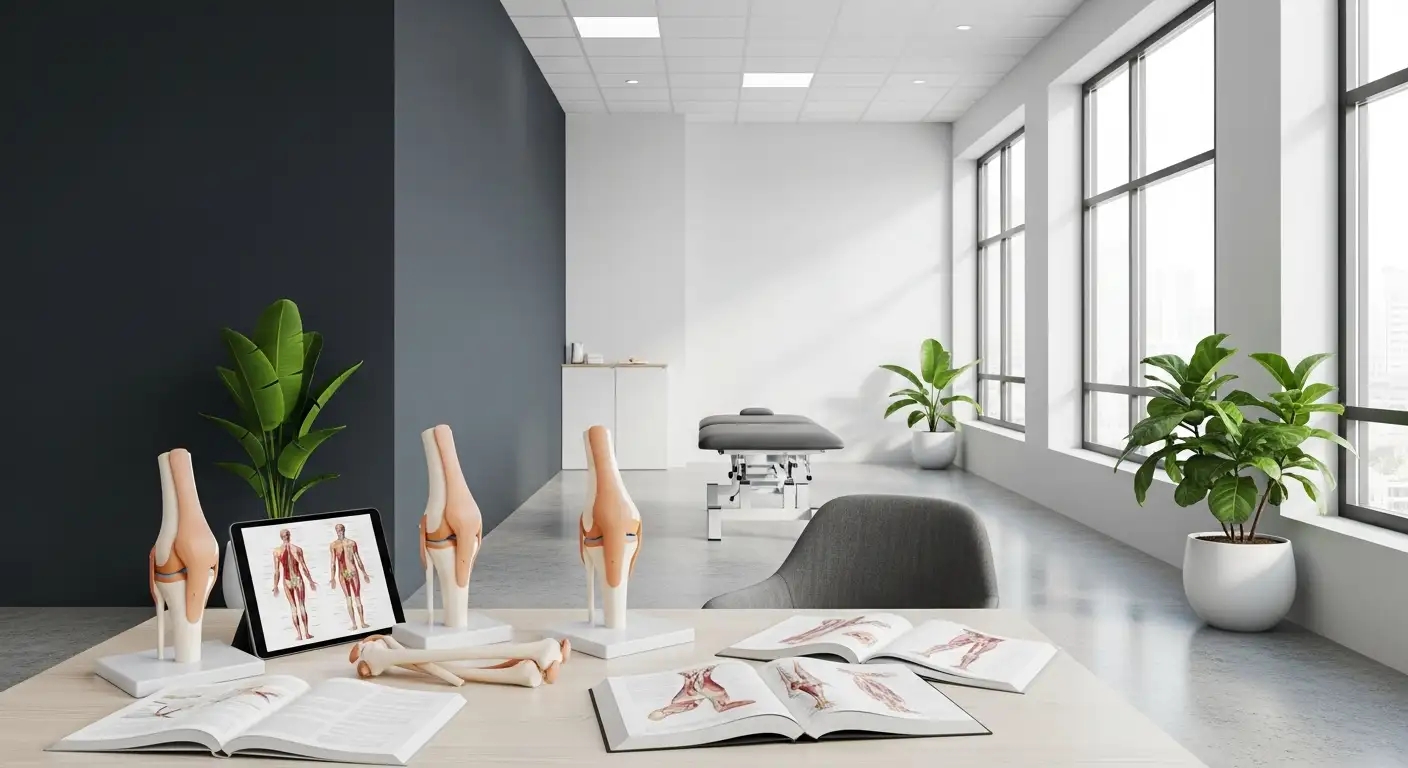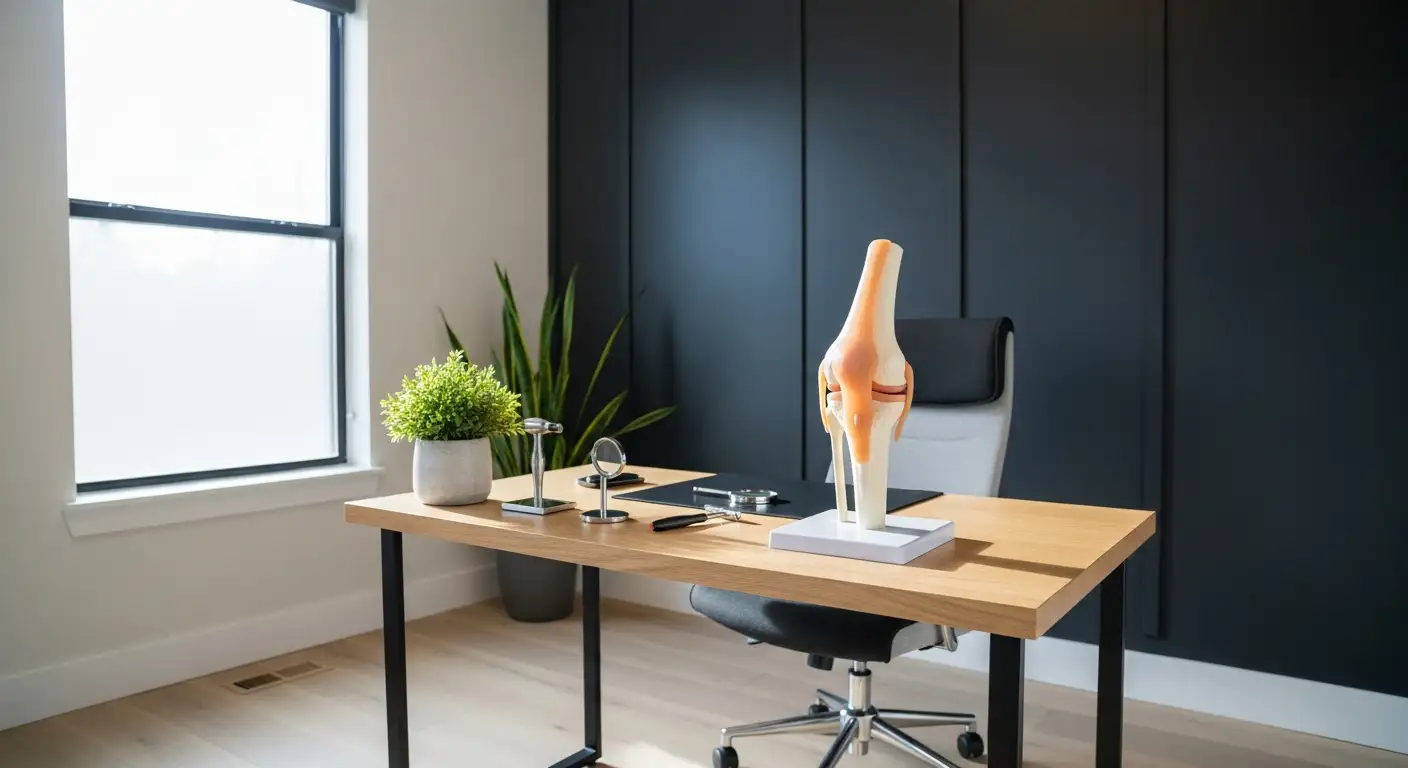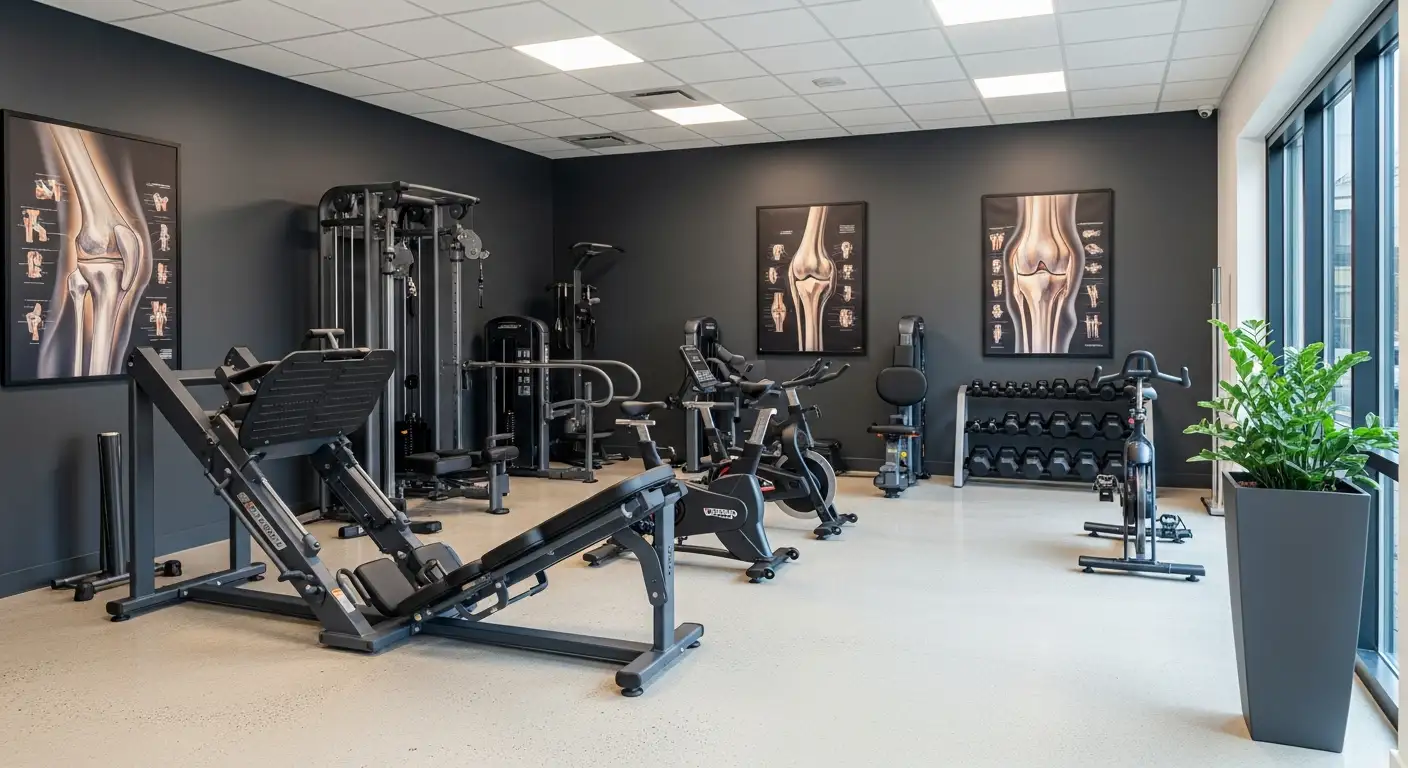Causes of Knee Pain
Understanding the source of knee discomfort is key to finding relief and preventing further damage. One common query is "what causes pain in the back of the knee?" Several conditions and injuries could be behind this discomfort, including a hamstring injury, jumper's knee, and biceps femoris tendonitis.
Hamstring Injury
A hamstring injury is a common cause of pain in the back of the knee. This type of injury typically causes a sudden, sharp pain in the back of the thigh, with swelling and tenderness usually developing within a few hours. Other symptoms may include bruising, a change in skin color along the back of the leg, muscle weakness, or difficulty bearing weight on the injured leg.

Hamstring injuries happen when one of the muscles becomes strained, pulled, or twisted or sustains a tear. Hamstring strains and tears occur when the muscle is stretched too far or stretched without being properly warmed up, which can happen during activities like climbing, jumping, lunging, or sprinting, especially if the movement happens suddenly. Direct impact, like being kicked in the hamstring, can also cause a strain or tear [2].
Jumper's Knee
Another potential source of pain in the back of the knee is a condition known as jumper's knee, or patellar tendonitis. Jumper’s knee is caused by overloading or overusing the patellar tendon. It causes pain in the kneecap that worsens over time. It's a common complaint among athletes who engage in sports that involve frequent and intense jumping, such as basketball or volleyball.
Biceps Femoris Tendonitis
Lastly, biceps femoris tendonitis, another type of hamstring injury, can also cause pain in the back of the knee. This injury is common among athletes who play sports like soccer, basketball, tennis, or hockey. The injury occurs when the biceps femoris, one of the three hamstring muscles, becomes strained or torn. It's often a result of overuse or sudden, intense movements, such as fast sprinting or kicking.
In conclusion, if you're experiencing pain in the back of the knee, it could be due to a hamstring injury, jumper's knee, or biceps femoris tendonitis. It's important to consult with a healthcare professional for a proper diagnosis and treatment plan.
Baker's Cyst
One of the common causes of pain in the back of the knee is a condition known as Baker's cyst. This section will provide an overview of this condition, its symptoms, diagnosis, and possible treatment options.
Overview of Baker's Cyst
Baker's cyst, also known as a popliteal cyst, is a fluid-filled sac that forms behind the knee. It results from an excess of synovial fluid, which is typically due to arthritis or a knee injury. Common forms of arthritis that can lead to a Baker's cyst include osteoarthritis and rheumatoid arthritis. Injuries that can contribute to the development of a Baker's cyst encompass ligament damage and meniscus tears [4].
Symptoms and Diagnosis
The main symptoms of a Baker's cyst include swelling and stiffness, which can worsen with activity. In some cases, a Baker's cyst can rupture, leading to additional symptoms such as increased swelling, pain, and redness in the knee and lower leg. Rupture occurs when the sac around the cyst fills with fluid too quickly or with too much pressure, leading to bursting [4].
Diagnosis of a Baker's cyst typically involves a physical exam by a healthcare provider, where they look for a lump on the back of the knee. Imaging tests such as ultrasound or MRI may also be used to confirm the diagnosis [4].
Treatment Options
The treatment for Baker's cysts typically involves addressing the underlying cause, such as arthritis or injury. For minor injuries, the RICE method (Rest, Ice, Compression, Elevation) can be effective.
Medications may be prescribed to manage the pain and swelling associated with a Baker's cyst. Physical therapy can also be beneficial in improving knee mobility and strength. In severe cases, where the cyst causes significant pain or affects mobility, knee surgery may be recommended.
Understanding the nature of Baker's cyst can help in effectively managing the condition and alleviating the associated knee pain. It's essential to consult with a healthcare provider for an accurate diagnosis and appropriate treatment plan.
Additional Knee Pain Causes
While Baker's cyst, hamstring injuries, jumper's knee, and biceps femoris tendonitis are common causes of pain in the back of the knee, there are other conditions that can also lead to this type of discomfort. Here, we explore three additional causes: meniscus tears, overuse injuries, and ligament tears.
Meniscus Tears
A meniscus tear is a common knee injury that often results from a sudden twist or pivot. The meniscus refers to the rubbery cartilage positioned between the bones of your thigh and shin. A tear in this area can lead to stiffness, swelling, and difficulty in movement. Individuals with arthritis or those of older age may be more susceptible to tears in the meniscus.
The symptoms of a meniscus tear may include:
- Sharp, intense pain in the knee area
- Swelling and stiffness
- Difficulty moving the knee
- A feeling of the knee 'giving way'
Overuse Injuries
Overuse injuries are another common cause of pain in the back of the knee. These types of injuries can occur due to repetitive motions, especially without proper conditioning. For instance, runners may experience overuse injuries due to the consistent impact of their feet hitting the pavement.
Symptoms of overuse injuries may include:
- Gradual onset of pain
- Swelling around the knee
- Pain that worsens with activity
Ligament Tears
The knee has several ligaments that can be torn or injured, leading to pain. One of the most common is an ACL (anterior cruciate ligament) tear, which can occur after suddenly changing direction in sports like soccer, football, or basketball.
Symptoms of a ligament tear may include:
- Sudden, severe pain
- A loud pop or snap during the injury
- Swelling within 24 hours
- A feeling of instability in the knee
Understanding what causes pain in the back of the knee is the first step towards seeking appropriate treatment. If you experience persistent knee pain, it's recommended to seek medical advice to determine the root cause and find the best course of treatment.
Addressing Knee Pain
While the causes of knee pain can vary, there are several common strategies for addressing discomfort, including strengthening exercises, medical treatments, and preventative measures.
Strengthening Exercises
One effective way to alleviate knee pain is through strengthening exercises. By targeting the muscles around the knee, these exercises can help provide additional support to the joint, thereby reducing pain and discomfort. Physical therapy and specific exercises tailored to the underlying condition can be especially beneficial.
Low-impact exercises such as stretching, swimming, and water aerobics are recommended for relieving knee pain. Equipment like exercise bikes or elliptical trainers can also be beneficial.
One particular exercise, the glute bridge, targets the glute muscles in the buttocks that affect knee movement, and can be beneficial for knee health [7].
Medical Treatments
Most knee pain, including that caused by arthritis, can be treated with exercise. However, if symptoms include a pop in the knee, swelling, or the knee buckling or locking up, it's important to seek medical attention.
In the case of a hamstring injury, treatment usually involves the RICE method (Rest, Ice, Compression, Elevation). Over-the-counter anti-inflammatory medications can help ease pain, and physical therapy might be recommended to improve strength and flexibility in the hamstring muscles.
Prevention Strategies
Prevention is a crucial aspect of managing knee pain, particularly when it comes to overuse injuries caused by repeated motions without adequate conditioning.
Preventing hamstring injuries involves taking steps to protect the muscles, such as seeking expert advice, particularly from a primary care provider. Easing back into activities can also help prevent re-injury.
The recovery time for hamstring injuries can vary, with some mild strains resolving within a few days, and more severe injuries taking weeks or even months to heal. In some cases, recovery could take as long as a year, due to the continuous use of the hamstring muscles in daily movements.
By understanding what causes pain in the back of the knee and exploring various strategies for addressing it, individuals can take steps to manage their discomfort and improve their quality of life.
References
[1]: https://www.mayoclinic.org/diseases-conditions/hamstring-injury/symptoms-causes/syc-20372985
[2]: https://www.templehealth.org/about/blog/recovering-from-pulled-hamstring
[3]: https://www.healthline.com/health/pain-in-back-of-knee
[4]: https://my.clevelandclinic.org/health/diseases/15183-bakers-cyst
[5]: https://www.webmd.com/pain-management/knee-pain/ss/slideshow-why-knees-hurt
[6]: https://www.mayoclinic.org/diseases-conditions/knee-pain/diagnosis-treatment/drc-20350855
[7]: https://www.webmd.com/fitness-exercise/top-exercises-knee-pain





